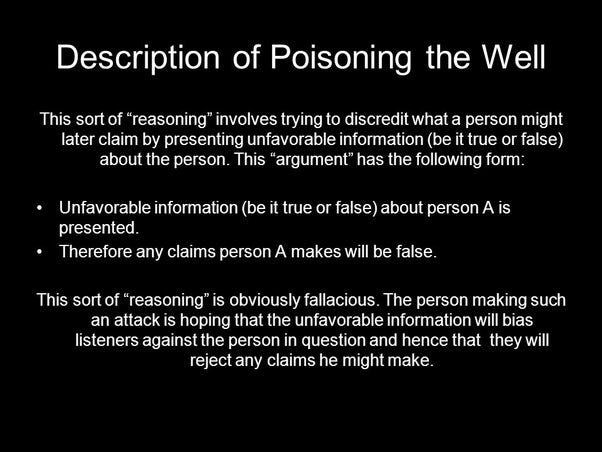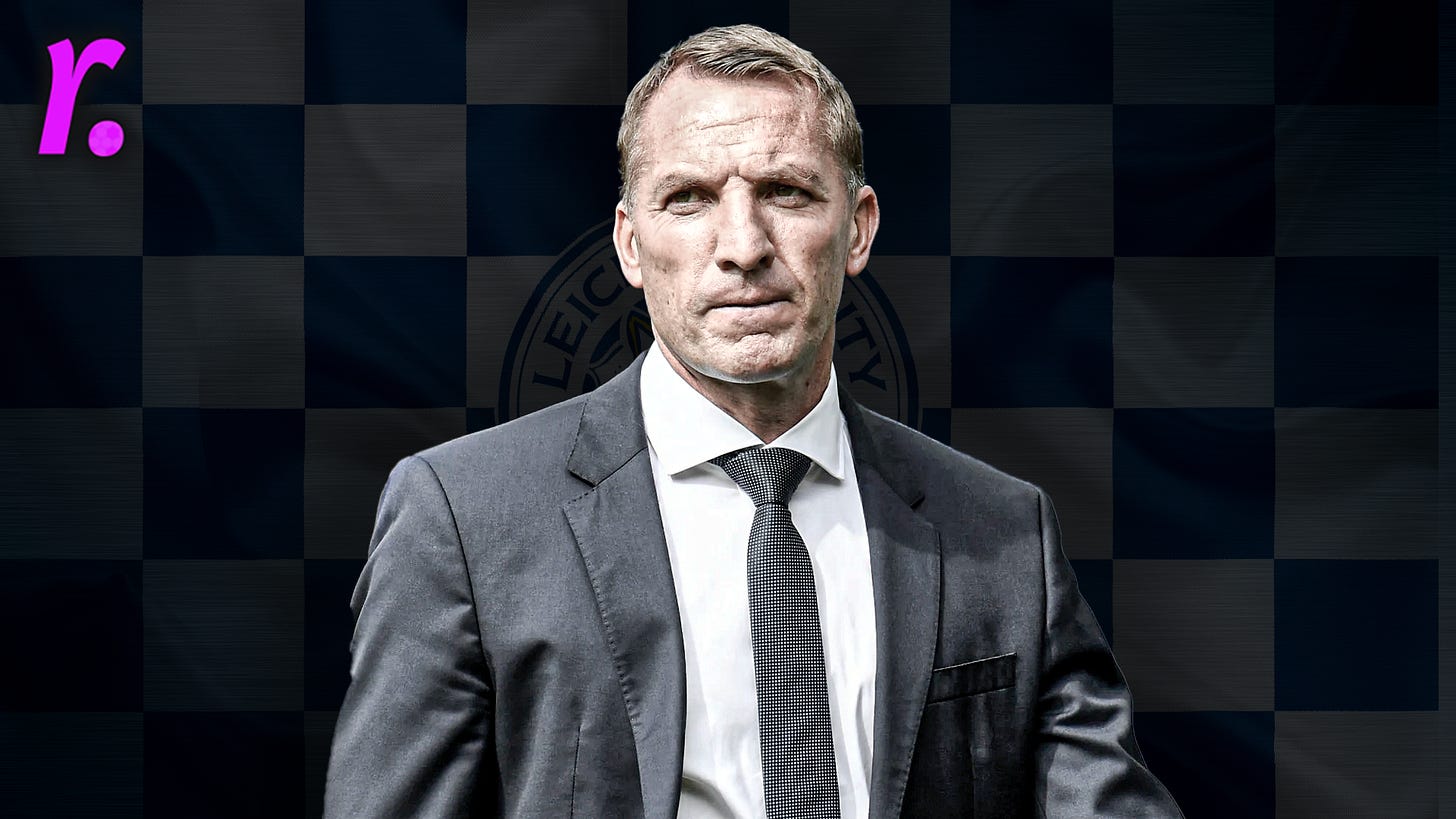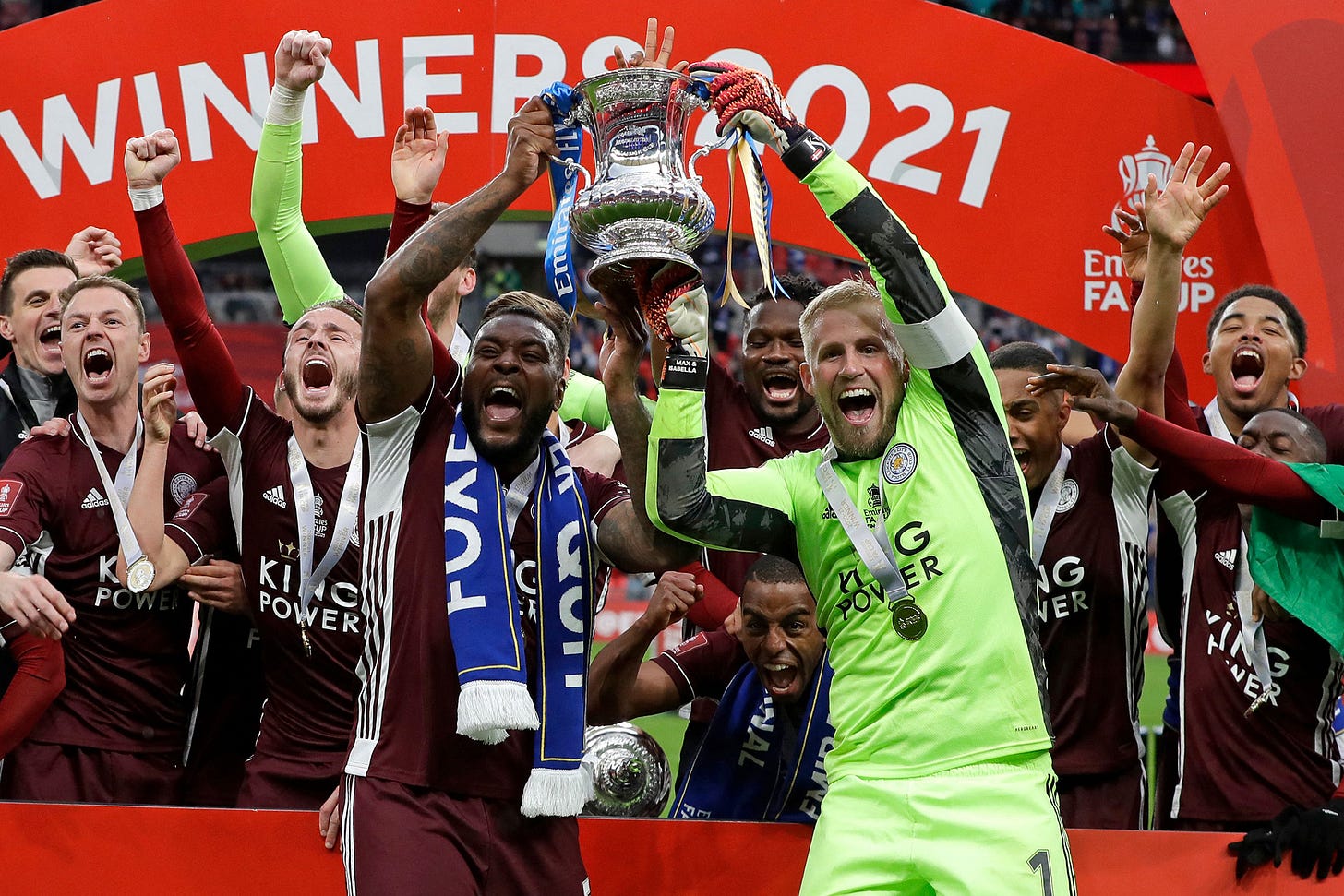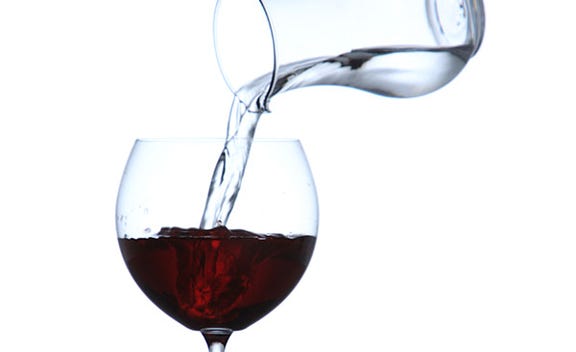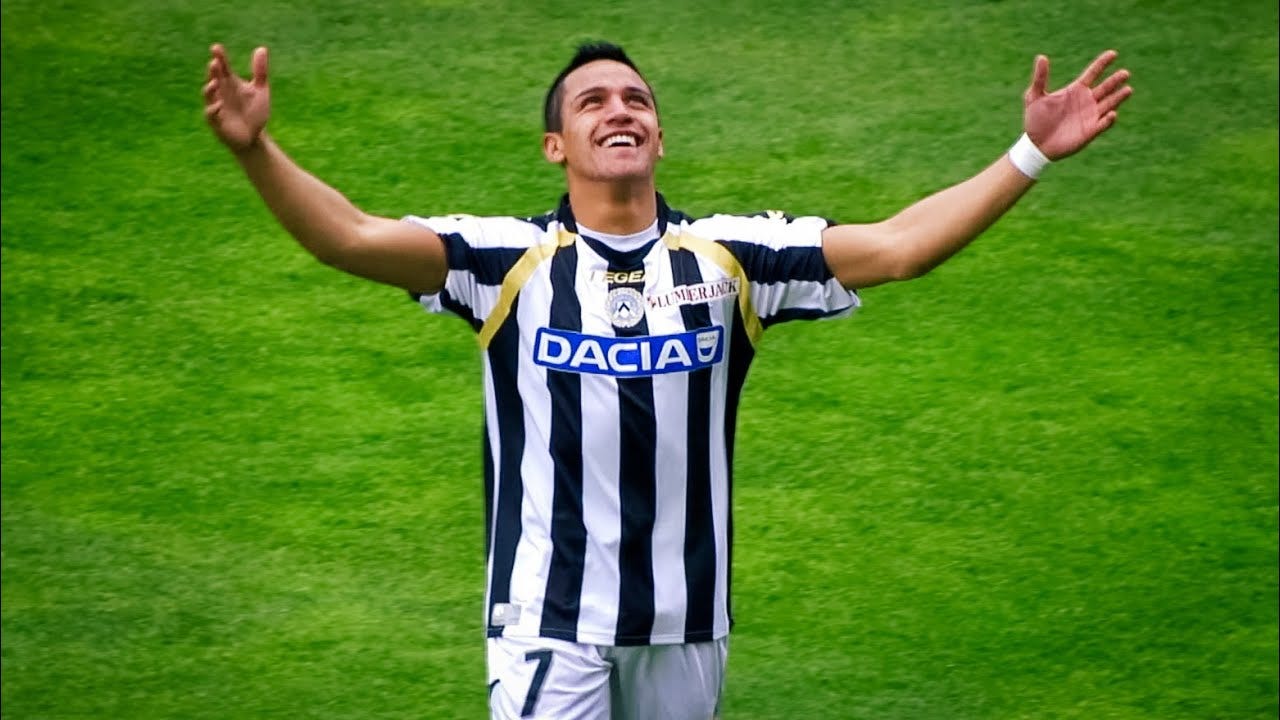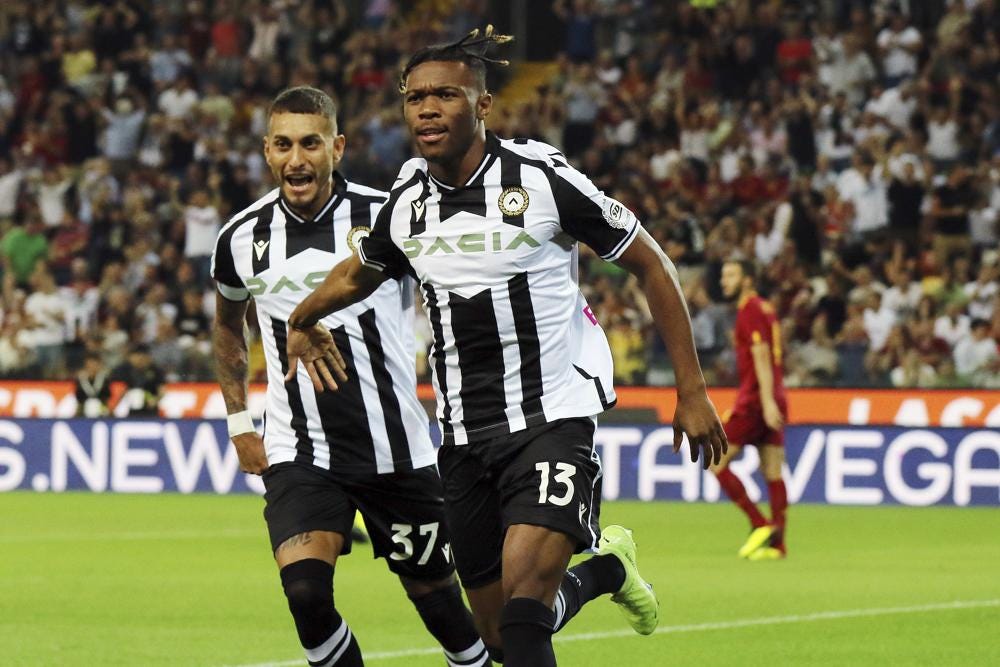Football Twitter: The Post-Truth Era, Influence & Manipulation. Stubbornness: Brendan Rodgers' Contagious Trait & More...
In this edition of 'Revamp The Game': A focus on the dangers of Football Twitter, Brendan Rodgers' on the brink, have Udinese struck gold? And, simulating the remainder of the K-League.
#003
Teeing off, we have Evan aka the Sawkur God with a critical analysis on the state of Football Twitter and the potential hellish nature of it as so called ‘agendas’ begin to manipulate the opinions and minds of those who look to seek information and knowledge from the website. Kieran assesses Brendan Rodgers’ current failings at Leicester and if the blame should really be pinned upon him. Kaustubh returns with another look at Serie A and this time a detailed focus on the positive start at Udinese. Finally, everyones go to graphical guy, Ben, simulates the remainder of the K-League season. To find out who (according to the simulation) wins, check out the final league table at the end of this edition of Revamp The Game.
Social Media, Sports, And The Poisoning Of The Well
Evan Gregory
A Hellish Landscape…
Trolling, baiting, running agendas, whatever you want to call it. Hardly a new phenomenon in the cesspit that is Football Twitter, nor a disease that is limited to our specific subsection of the internet. Perhaps we’re not all susceptible to engaging in this type of behaviour, but most of us are prone to “biting”. We breathe life into it, we give the virus a new host to feed on. For a long time, “we” only pertained to you and I, we being the ‘average Joes ‘ of the internet, amateurs in the way we perceived and participated in sporting discourse. However, a new, worrying trend is quickly forming–“we” are now professional athletes and pundits themselves, official twitter handles for the world’s biggest teams, largely reliable news outlets, and the brands that pump the money into our game.
The Worrying Validity Of Blatantly Disingenuous Punditry…
This author used to (and still mostly does) think that a vital pillar for general legitimacy in any sector is not acknowledging the discourse or noise that comes from beneath them or outside of their realm of control. Why should Fabrizio Romano, for example, spend his entire day arguing with the endless hordes of pubescent boys hiding behind pictures of professional footballers, telling him he knows nothing every time he tweets? He doesn’t do that because he’s A) employed and B) it’s beneath him. He damages his reputation and legitimacy by acknowledging them.
Not every popular figurehead has this type of self-control. It’s become quite common for players to not only acknowledge what someone like Gary Neville has to say about their on-pitch performance, but also the words and vitriol of the common troll pushing their lazy agendas on a platform that incentives lazy statements and stokes the embers of outrage.
It doesn’t stop there. Even more common than the occasional player acknowledging what @Vintage(insert footballer’s name here) has to say about their 6.2 SofaScore rating is the large and formerly reputable news outlet endorsing these poisonous opinions for engagement. The result is a cheap bastardisation of shallow entertainment, a concept as old as show business itself. Combine this with twitter’s algorithmic push of the day’s most controversial takes to the top of your feed and you have one hell of a nauseating, online cocktail.
The detrimental effect this has on the average ingester of this information is understated and (frankly) somewhat dangerous, and as stated before, this is NOT limited to the various communities of Football Twitter. With the sheer volume of blatantly disingenuous punditry, what inevitably forms is a deafening echo chamber that reinforces any and everybody’s confirmation bias.
You can literally find ANY take. It genuinely would not be hard to find some lad trying to tell you that Cristiano Ronaldo’s only lasting effect on the game was his ability to convert penalty kicks. This author could probably (in under a minute) find a tweet with 1000+ engagements claiming that Steven Gerrard was bad at shooting.
Combine this with the fact that not every twitter user has the internet literacy required to deduce between an educated, serious opinion and blatantly obvious trolling and you have a recipe for disaster–the perfect poison for a cavernously deep well.
‘Unpoisoning’ the well…
It can’t be all bad, right? Football Twitter makes me laugh at least a few times a day. It’s brought us countless memorable and wholesome moments over the years. But have the internet’s positive contributions been worth the apparently irreversible poisoning of our daily discourse? This is a question that haunts me on a daily basis.
Where do we go from here? How overly-saturated with nonsense can our daily lives on Football Twitter and (the internet in general) be before we see some sort of collapse? When and where does the bubble burst?
Does the truth always prevail, or do we live in the post-truth era?
Evan Gregory (@SawkurGod)
Brendan Rodgers - A Victim Of His Own Success?
Kieran Roy
Unimaginable…
If you were to predict at the start of the season which team would most likely be bottom of the table with one point after seven games, having conceded a whopping 22 goals, there would be a fair few sides that spring to mind before Leicester City. The Foxes are in trouble.
It seems almost ridiculous to write that sentence about a side who have managed four top 10 finishes out of the last four years during Rodgers’ time as manager at the club, but times have changed, and those back-to-back 5th place finishes in 2020 and 2021 seem a long way away from Leicester’s current form.
So, What’s Happened?
But what’s gone wrong for Rodgers and his side?
When Leicester parted ways with former coach Claude Puel, the Foxes were languishing down the table in 12th place and had just been beat 4-1 at home to Crystal Palace. It was a humiliating defeat and spelled the end of Puel’s time at the club, which had been rather unsuccessful.
Enter the former Liverpool and Celtic coach, Brendan Rodgers. The man who, but for an infamous slip, could have been the person to bring the first Premier League trophy to Anfield. Rodgers oversaw a complete turnaround in form for Leicester, losing only three of their final 10 games of the season. Some well fought wins, including a 3-0 victory against Arsenal, saw the Foxes climb up the table to finish 9th.
The summer of 2019 saw Harry Maguire leave the club for a record £78 million fee. He had become a top-class defender for Leicester, and his departure was a big loss for Rodgers both on the pitch and in the dressing room. With that record fee, Youri Tielemans and Ayoze Peréz were brought to the club.
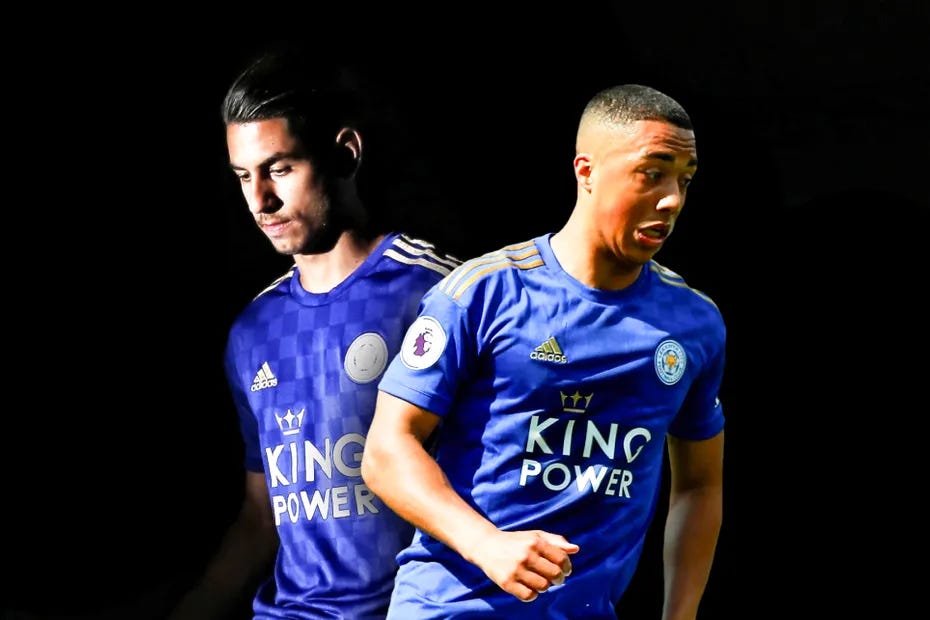
There was no clear replacement for Maguire, but Rodgers had already identified 23-year-old Çağlar Söyüncü - who had played a bit part role under Puel, as a good replacement for the departing Englishman. A decision that proved to be pivotal for Leicester, who finished in 5th place in 2019/2020, with Söyüncü being named in the PFA team of the year after a fantastic season.
More In’s And More Notable Out’s…
Another Summer, another big name headed out of the Leicester City door. This time, Ben Chilwell left to join Chelsea for a £50 million fee. Brendan Rodgers had spent much of the summer denying that Chilwell would leave the club, only to be left in the mud as he lost yet another key defender for his side.
Replacements came in the form of 19-year-old Wesley Fofana, and 24-year-old Timothy Castagne. Once again, Rodgers turned two relatively inexperienced talents into high quality Premier League defenders. Leicester were able to repeat their achievements of the year before, finishing 5th, with Fofana being named Leicester’s young player of the year.
The Summer transfer window, which must have been becoming Rodgers’ worst nightmare, opened after the season ended in 2021. Despite no big departures (club captain Wes Morgan retired), Rodgers was handed a mixed bag of signings. Patson Daka, Boubakary Soumaré, and Saints duo Ryan Bertrand and Jannik Vestergaard joined the Foxes, with the latter three certainly failing to find any sort of form for Leicester.
An injury hit season, which saw Wesley Fofana miss seven months of action, damaged Leicester’s league performance. With a thinly stretched squad, as well as the Europa League to contend with, Leicester had their worst full season under Rodgers, finishing outside of the European Qualification spaces in 8th.
Please, A Cash Injection..Anyone…Anyone?
You would think, after so many years of big money sales and frugal spending, that Rodgers would be given a large amount of cash to build on his thinly stretched, ageing squad… In fact, quite the opposite occurred. Key defender Wesley Fofana was sold for £70 million to Chelsea during the final week of the transfer window. Even more bizarrely, Kasper Schmeichel was allowed to leave the club and was replaced by… no-one. Let’s just repeat that… A first choice-goalkeeper was sold, and Leicester did not sign a replacement. Instead, the job was handed to Danny Ward, who has performed, unsurprisingly, at the level of a below standard second choice keeper.
To replace Fofana, 24-year-old Wout Faes was signed, with Rodgers previous successes with young defenders, meaning he is seemingly expected to turn a relatively unknown defender into yet another world beater.
It’s become very easy in the modern game to blame a manager for any problems a team may be having. In this case, however, it seems mind-blowing that so many people have turned on Brendan Rodgers, a man who, despite having his best players sold off each summer without replacements, has managed, so far, to keep Leicester finishing inside the top ten every year. Whilst the King Power Stadium has become somewhat of a merry-go-round of defenders, Jamie Vardy has been allowed to reach the age of 35 with only Daka - who has been inconsistent at best, to replace him.

Whether Rodgers survives until the January transfer window remains to be seen, but the way this season is going for the Foxes that seems unlikely. It could be argued that with quality players like James Maddison and Harvey Barnes in the side, Leicester should be better going forward. Conceding 22 goals in seven games is undoubtedly a shocking defensive record. The reality, however, is this… If you have one of the worst second-choice goalkeepers in the Premier League, and you decide to make him your first team goalkeeper, you are going to concede a lot of goals.
Rodgers built his success at Leicester on his ability to turn young, inexperienced players into some of the best in the Premier League. Leicester’s reliance on that ability, however, may prove to be his downfall.
Kieran Roy (@KieranRoy1)
The Revolving Door At Udinese: Can One Find Success Within It?
Kaustubh Pandey
The Pozzo’s…
The Pozzo family is currently witnessing two different sides of the same coin. While Watford have appointed their 17th manager since the summer of 2012, their Pozzo-owned Udinese are third in Serie A and just one point off the top of the league. Even though one of the two (Watford’s managerial merry go round) is a rather well-known cyclical routine that repeats itself often, the second (Udinese’s fine form) is a rare occurrence.
The Friuli-based outfit did finish third in the 2011/12 campaign as Antonio di Natale’s exploits saw them pick up their highest-placed finish in recent Campeonato history. However, that was a different Serie A, as compared to what it has become now. The league hadn’t grown tactically, and the level of competition was quite frankly, on the floor. The opposite is true for 2022, as Serie A is prepared to witness one of if not its most competitive season in a generation.
Sottil & Early Promise…
There of course remains a high chance that Andrea Sottil’s side will not finish third and that many key players will be lost next summer, but their performances have added a fresh dose of excitement to Serie A - especially with Inter and Juventus yet to fully hit the ground running.
In many ways, Sottil was never meant to be here. The father of Fiorentina’s Riccardo Sottil, the 48-year-old has spent more time managing in Serie D and Serie C than in the top two flights of Italian football. Not long ago, his Pescara side was fighting relegation from Serie B and his first campaign at Ascoli had the same challenge. A season later, he came very close to taking I Picchi to Serie A but Gabriele Cioffi’s exit to Verona meant that Udinese brought him to the top-flight for the first time in his career anyway.
Udine: A Home To Talent…
Udinese already possessing an identity has certainly helped - something which can’t be said for the Pozzo family’s English side. The Friulani have made a brand name for themselves for being a club that develops talents, sells them on and repeats this process over and over again. Alexis Sanchez, Bruno Fernandes and Samir Handanovic are your stand-out examples, but this policy doesn’t just stop at the playing level. The Udine side have an eye to bring in managers that set the tone for something new, as evidenced by their recruitment of Luca Gotti, Luciano Spalletti and Igor Tudor. And Sottil, who has seen the ups and downs of the Calcio pyramid, fits that profile perfectly.
Currently sixth in Serie A for Expected Goals, Sottil’s side have overperformed on xG by > 5 goals, which is certainly the first stark sign of the fact that this ‘golden period’ may not last too long. But the fact that they are in the top 10 for least xG conceded suggests that Udinese could well improve on their finishes in the last few seasons under Sottil, something which could accentuate the values of their prized assets.
League Entertainers…
Sottil’s comments following Udinese’s shock 4-0 win over Roma pretty much encapsulate his approach towards the game. While largely uncomplicated, it relies on cutting off spaces in midfield for the opposition and playing the ball quickly to the forward players, which include Tottenham’s Destiny Udogie and ex-Watford man Roberto Pereyra as the always important wing-backs in a 3-5-2 system.
After the win over the Giallorossi, Sottil stated: “I am trying to create our identity with the lads, hoping to improve the performances game by game. The team was extraordinary tonight, created so many chances, had rapid counter-attacks, as this side has in its DNA that tendency for devastating transitions.
“We allowed Roma very little, closed up the spaces through the centre where they tend to excel and neutralised them.”
In more ways than one, this approach suits the Bianconeri. With Gerard Deulofeu in the form of his life and carrying it on from the previous campaign, the Spaniard’s pace and service only complements Beto, who has already been linked with a move to Napoli as a potential replacement for Victor Osimhen. Lazar Samardzic has impressed with his tally of two goals, sparking talk about whether he would pick Germany or Serbia as his national team.
Arguably, Udogie has been the pick of the lot. Having shown his ability to carry the ball into advanced areas, he has also racked up a couple of goals whilst also proving his strength of skipping past defenders at ease - a value that Antonio Conte adores in his wing-backs. Goalscoring isn’t a new phenomenon by any means for the left footer, as he did find the back of the net 5 times last season. As with Deulofeu, he has also stepped on from where he left off last season but there is a firm belief that Sottil’s transition-based system may take him to the next level.
Slick play inside from the likes of Deulofeu, Beto and Samardzic often allows Udogie and Pereyra to take touches in the half-spaces instead of staying wide, making Udinese more unpredictable than before. While Pereyra has previously been used in more central roles, this current setup adds more to Udogie’s current skillset and benefits him greatly.
While not a purely high-pressing unit, Udinese have operated like a very well-oiled side as they generally shift from being a predominantly low-block side to a team that can go deeper. Keeping in mind that Tolgay Arslan, Walace and Sandi Lovric are not the finest technical outlets, dictating play from the back and acting as ‘La Pausa’s’ does not suit Udinese’s methodology. Instead, directness and relentless line breaking progression, such as firing the ball quickly into to the front five is a very viable and favoured option. That is largely why a majority of their passes are medium-range passes and not aimless long-balls or sweet shorter passes that can suit more technical midfielders.
Young Starlets…
Being a well-oiled side means that they have made the second-highest number of pressures across the pitch and they have a very healthy success rate too, with a majority of pressing being done in the heart of the park. That is another quantity that favours both Lovric and Arslan, but also benefits Deulofeu, who has shown the willingness to drop deeper, press the opposition and ensure that the Friulani have an extra man in the middle of the park.
Playing deeper also allows the backline to thrive - even though new permanent signing Nehuen Perez is very quick across the ground. Marshalled by the impressive Becao, Udinese do not look to dominate possession or build from the back, as the team relies a lot on ball-carriers in the forward areas and that is the aim of the passers from the back - including the impressive Jaka Bijol.

As the likes of Deulofeu, Udogie, Samardzic and Pereyra use their quick movements and exchanges, it is Beto who is left to convert, but the 2021 summer signing isn’t just all about goals. The 24-year-old Guinean has a great stride that alongside his mental sharpness, allows him to be one step ahead of the opposition defenders and make it tough for others to keep up. While he is not a movement-first striker like Osimhen, a case can be made of the fact that he is perhaps more technically sound and has a first touch crafted by the footballing Gods. His aerial strength certainly arises from his towering frame, making him a striker that Udinese will likely look to profit heavily off soon.
Perhaps, that could be said for a lot of Udinese’s star players, as Sottil’s approach does not hold them back in a way Cioffi’s approach probably did. Samardzic is still only 20 and excels in progressing the ball either through passing, ball carrying and chance-creation. Lovric is also only 24 and his willingness to be a dynamic, all-action midfielder will most likely be of some value for a host of clubs in Italy.
Deulofeu himself is still only 28 - despite seemingly playing football for as long as I can remember. Over the last 12 months, his profile has only improved once again, and he has often blown teams away with his quick feet and ability to breeze past defenders. Considering that he arrived for a mere €17 million, there could be potential for a profit to be made from his sale at some point.
Scudetto For The Friulani…
As things continue to look up for Udinese, they have given a very fair account of themselves against teams that will attack them - Fiorentina, Roma, Sassuolo and Inter. It presents their forward players the chance to run in behind and into spaces - something they will likely not receive the luxury of against the more pragmatic Serie A sides. And so, all we can do is wait, wait to see how Udinese approach fixtures against ‘low-block’ outfits. Will they begin to struggle or, is the Italian league in for a rude awakening in the form of an Udinese title challenge.
Kaustubh Pandey (@Kaus_Pandey17)
Ben Simulates The Final Stages Of The K League 1
Ben Griffis
K League Explained…
The 2022 edition of K League 1, South Korea’s Top Division, is coming to a close. The end of round 33 on September 18th marks the start of the last stretch: the final series. Much like in the Scottish Premiership, the 12-team league splits into two groups of six teams to end the season.
After each team has played each other three times, the top six play each other once to determine the title winners and AFC Champions League qualification (top three spots), while the bottom six teams play once to determine the team to be automatically relegated and the two teams in the relegation playoffs.
Here is the current table after round 33.
Ulsan are the current leaders, 5 points ahead of Jeonbuk who have won the last five years running, and seven of the last eight. Ulsan have not won since 2005 and have been runners-up in each of the last three years. Jeonbuk and Pohang look to have the final two Champions League spots secured, although Incheon have a chance of moving up if Pohang slip up in Final A.
On the other end of the table, Seongnam have had a torrid season and have been in 12th since round 5. The current relegation battle is for the two relegation playoff spots, with Daegu, Gimcheon (a team consisting of professional South Korean players on their mandatory 2-year military service), and Suwon Bluewings all vying for that one safe spot among them, as FC Seoul and Suwon FC appear to be clear of danger.
The Simulation…
I’ll be simulating the last five matches of each team in this piece. So first, let’s go over the model. Feel free to skip this section if you just want to see the results.
My model considers the average and standard deviation expected goals (xG), expected goals conceded (xGA), and actual minus expected goal difference (GD-xGD) for all 33 matches this season. Instead of looking at just the goals scored and goals conceded, I input information about the expected performances and the end result against those expected performances.
I use a Monte Carlo method for the simulation. This method, named after the famous Monaco casino where the inventor’s relatives gambled, generates tons of random samples derived from a designated distribution. Essentially, my model creates a normal distribution (the “bell curve” you may have seen in school) for all three variables (xG, xGA, GD-xGD) and then picks 2,500 outcomes, averaging those out to tell me whether the focal team will win, draw, or lose against the specified opponent.
The number 2,500 arises since I have the model generate 50 game results for each iteration, and I iterate these another 50 times before averaging out everything. There is some more detailed background math II won’t go into, but I will note that I am focused on the actual result, not the goals scored. So, while some simulations you may have seen include game-level probabilities for goals scored, I am only concerned with the result itself.
This model is also fairly good at predicting final table positions (based on my work training it on 6 leagues in UEFA and J1 in Japan), however the top/bottom teams seem to have more extreme points tallies than mid-table, so I would recommend looking more at the final positions than final points.
The Results…
Below, is the final table with the positions and points based on the model’s simulation. Again, I would place more confidence in the positions than the exact number of points themselves.
In this simulation, Jeonbuk supplanted Ulsan at the top of the table and win their 6th title in a row. Winning all but one match (oddly enough, the Ulsan match) shot them to the top of the table. There were no other position movements in Final A, so Ulsan and Pohang qualify for the Champions League.
In Final B, we see Seongnam relegated to K League 2. That’s not a surprise, as there was never any genuine sense of hope for them to crawl out of the bottom spot. The only teams moving positions were Gimcheon and Daegu, which means that Daegu will have to play the winner of a match between Suwon Bluewings and the 2nd-place K League 2 team to determine who earns a spot in 2023 K League 1.
The Final Word…
Congratulations to Jeonbuk for winning Ben’s 2022 K League 1 Finals Simulation. A trophy is on its way to South Korea’s western coast.
Overall, this model shows us we should not expect a lot of movement for these teams. What this model does not show, however, is the round-by-round standings for the exceptionally tight relegation battle—something I’ve come to love as I’ve gotten into the K League. Every year going back to 2016 has seen a relegation spot be within 3 points of at least one other team, if not several.
This year, we have yet another tight race to see who will enter the relegation playoffs and who will be safe. Three teams are in immediate danger, but you can never say FC Seoul are safe in recent years with all their woes and inconsistency. I highly recommend tuning into games or following along each week as the 2022 K League 1 comes to a close.
Who knows, you may also see a falling Ulsan and a storming Jeonbuk (whose parent companies, Hyundai Heavy Metal and Hyundai Motors respectively, happen to have been founded by the same person in the late 60s/early 70s). Several teams have a lot to play for in just 5 remaining matches, so there will be loads of excitement in every match.
Ben Griffis (@BeGriffis)
Ömer’s Outro:
And That’s A Wrap. Not much to say from Ömer today as we close out what was arguably one of the most boring international breaks imaginable and that I guess is an achievement in itself. But hey, we now have non-stop club football all the way until the World Cup. So strap in and enjoy. We’ll try to cover as much as possible at Revamp The Game as we look to expand and grow. Without the awesome work of our creators and your support, this project would be nothing, so thank you to you all.
Hope you enjoy and have a safe week :)
Ömer Çayir (@Ömercayir1)






